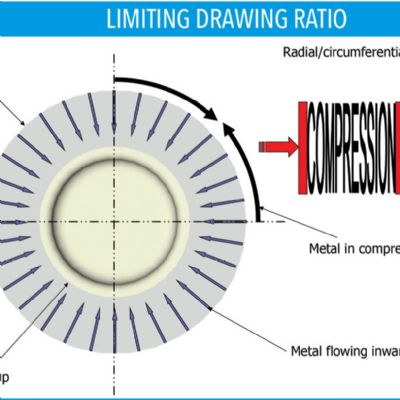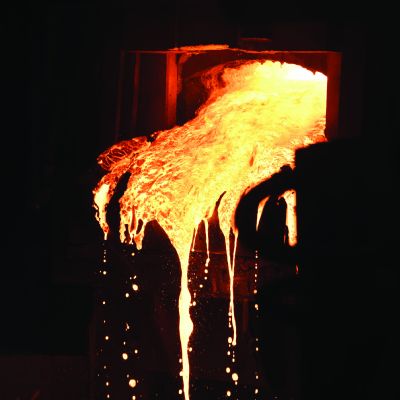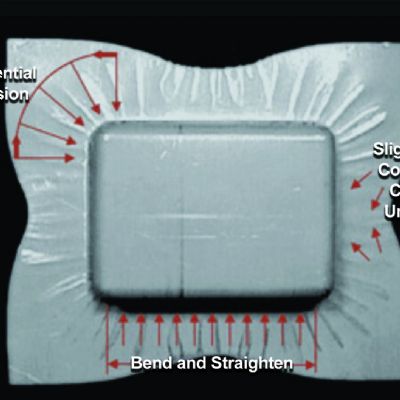Each year I conduct numerous technical die troubleshooting and maintenance courses for various companies. When I begin to discuss the topic of understanding materials, many of the tool and die makers and technicians tell me that there’s no need to discuss the material because they have no influence on which material is purchased. They typically tell me that they must make whatever comes in the door work.
Keep in mind that although there may be an element of truth to this statement, to do a good, data-based troubleshooting process means that, minimally, we must understand the fundamental behavior differences among material types. It is only through understanding these behavioral differences that we can make good data-based troubleshooting decisions.
For example, troubleshooting a part stamped from aluminum likely will be different than stamping the part from steel. Even though tool and die makers and technicians may have no direct influence on the material purchased, it is important to understand the behavioral differences. Each material to be formed has different behaviors and often requires different methods for troubleshooting and resolving cutting and forming problems.
Material Type, Grade, Thickness Affects…
- If the part actually can be made. Keep in mind that just because a part has been designed from a specific type of material and thickness, it is no guarantee that the material has the physical capabilities of taking the desired shape. When sheet metal meets physics, physics always wins. For example, one of my clients attempted to form a closed flat hem on a part using spring steel. Every time he attempted to create the hem, it would break off. Aside from doing something extraneous, such as heating the material, either the product design or the material needed to be changed.
- The tolerancing achievable with respect to the product. Some materials present very challenging springback variability and others have quite a substantial thickness variation. These present consistency issues in the metal stamping process.
- The number of steps necessary to stamp the part as well as the shape and geometry of each die station (assuming that the part can be made).
- The amount of force needed to cut and form the sheet material. The part geometry, including its size, also is a determining factor. The amount of force indirectly determines the press type and tonnage needed, as well as the accuracy needed from the press. Generally speaking, very thin, light-gauge materials with small part geometries run in high-precision, high-speed presses. Conversely, in some cases, thick, large parts can be formed in less precise, high-tonnage presses.
- The tooling-material type used to build the die. For example, premium grades of powdered-metallurgy tool steels or solid carbide often are used to cut and form high-strength materials such as stainless steel, while conventional grades such as D2 and A2 often are used to form low-strength materials.
- The size of the die sections and how they are secured to the die. For example, if cutting and forming ¼-in.-thick, low-carbon steel, it may be necessary to key all of the die sections to prevent them from shifting on the tool surface.
- The die length, because the material type and thickness influence the number of stations needed.
- If the tooling sections must be polished and coated with special coatings such as titanium carbide and other durable, low-friction coatings.
- Die parameters such as the cutting clearances, forming-radii sizes, holding- and stripping-pressure requirements.
- The type, chemistry and application methods of lubricants used to facilitate forming. Many ultra-high-strength materials require special additives in the lubricants to prevent die damage and wear. Often, these special additives must be removed using solvents, which adds a secondary post-stamping process.
Summary
Understanding the material type and thickness has a huge influence on many different factors. Trying to design, process or troubleshoot a die without at least basic data presents a significant risk. I’m certainly not saying that everyone must be an expert metallurgist, but we should, at least, have a basic understanding of different material types and their different behaviors. It is only through understanding that we can make solid data-based decisions. Data and understanding are the keys.
Until next time… Best of luck! MF
Avoiding the 7 Deadly Sins of Stamping: Part 2—Out-of-Sequence Timing
Avoiding the 7 Deadly Sins of Stamping: Part 3 Poor Die Setup
Avoiding the 7 Deadly Sins of Stamping: Part 4
Avoiding the 7 Deadly Sins of Stamping: Part 5 Metal-Flow Principles for Square Parts
See also: Dieology LLC
Technologies: Materials









